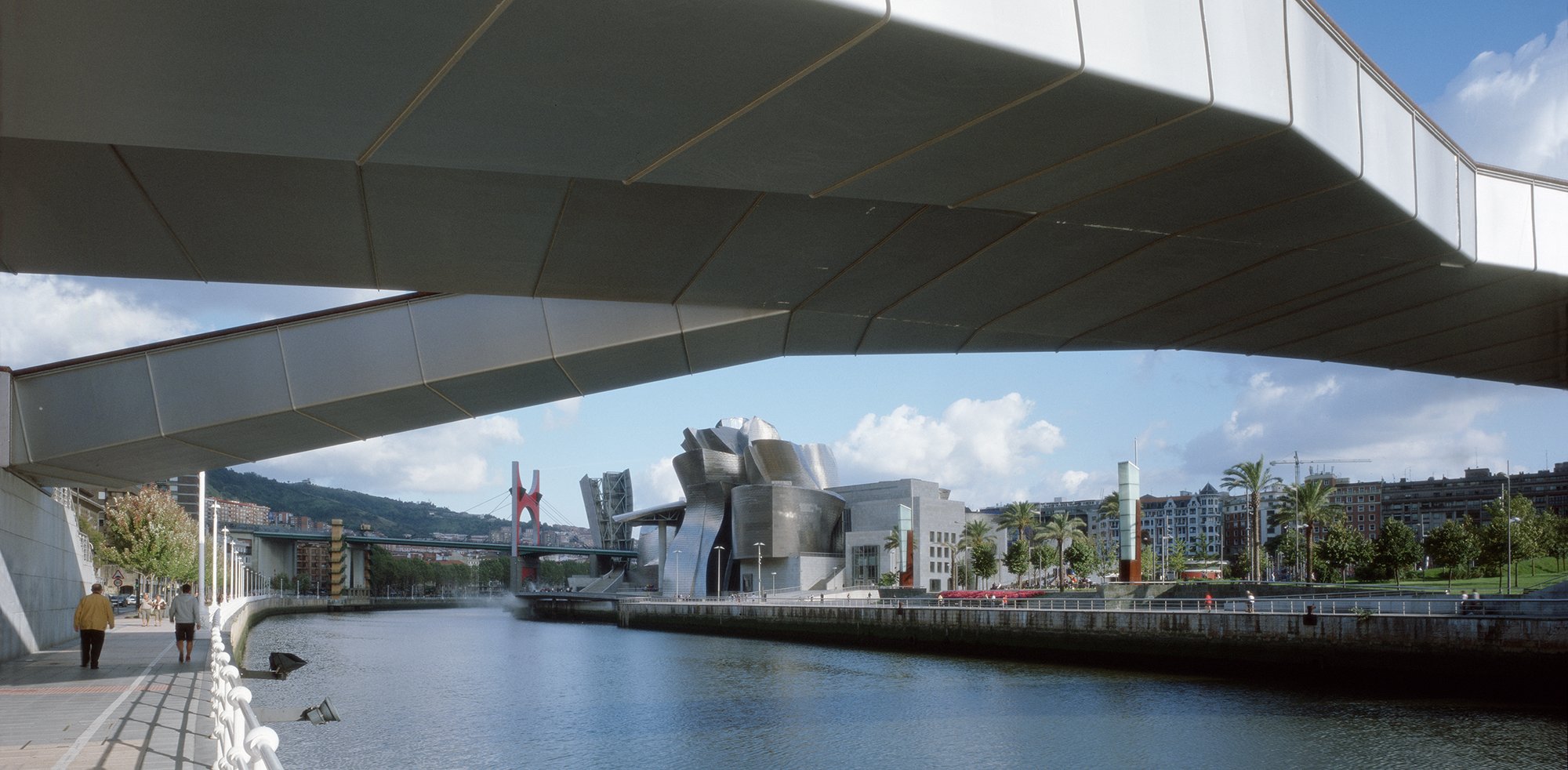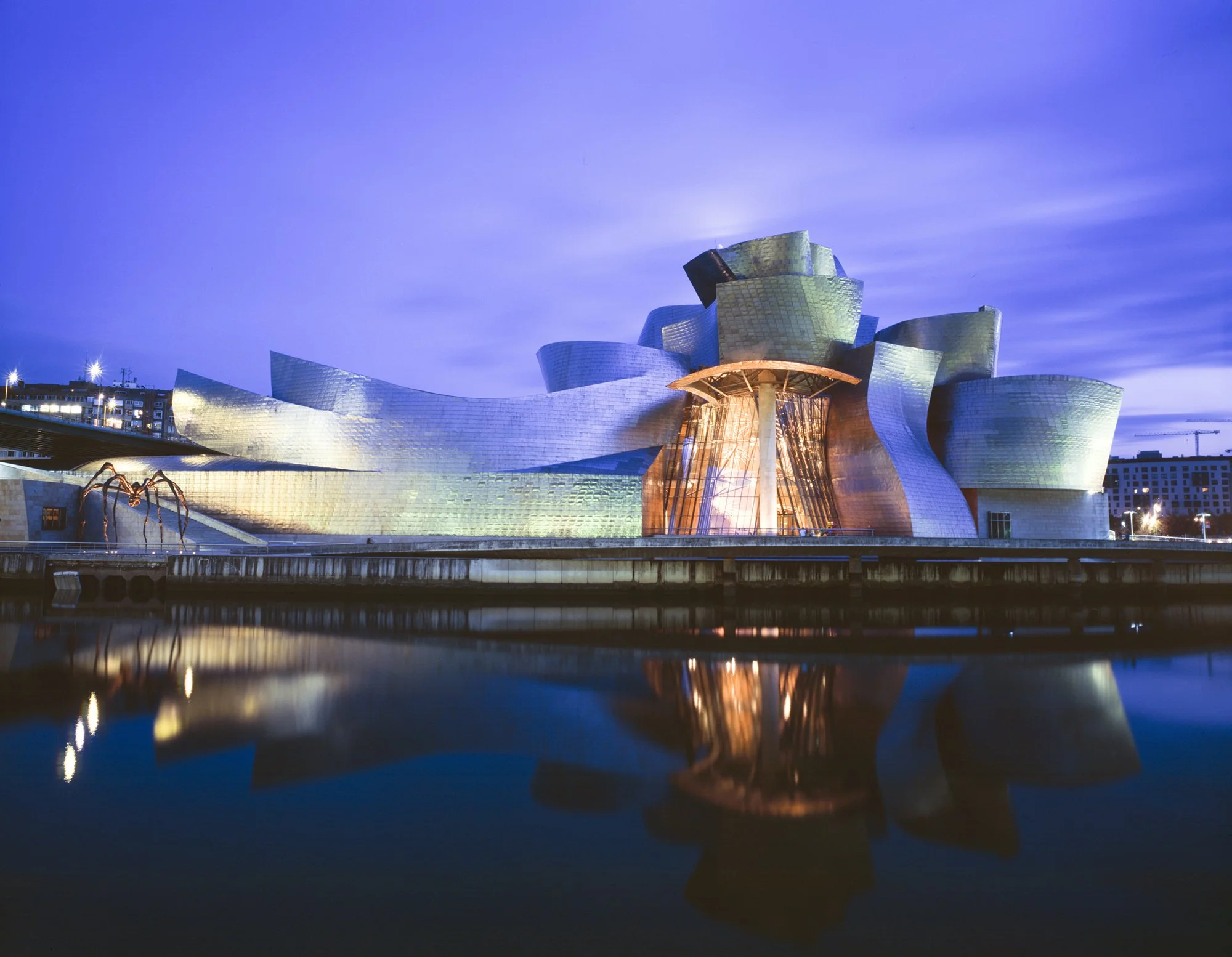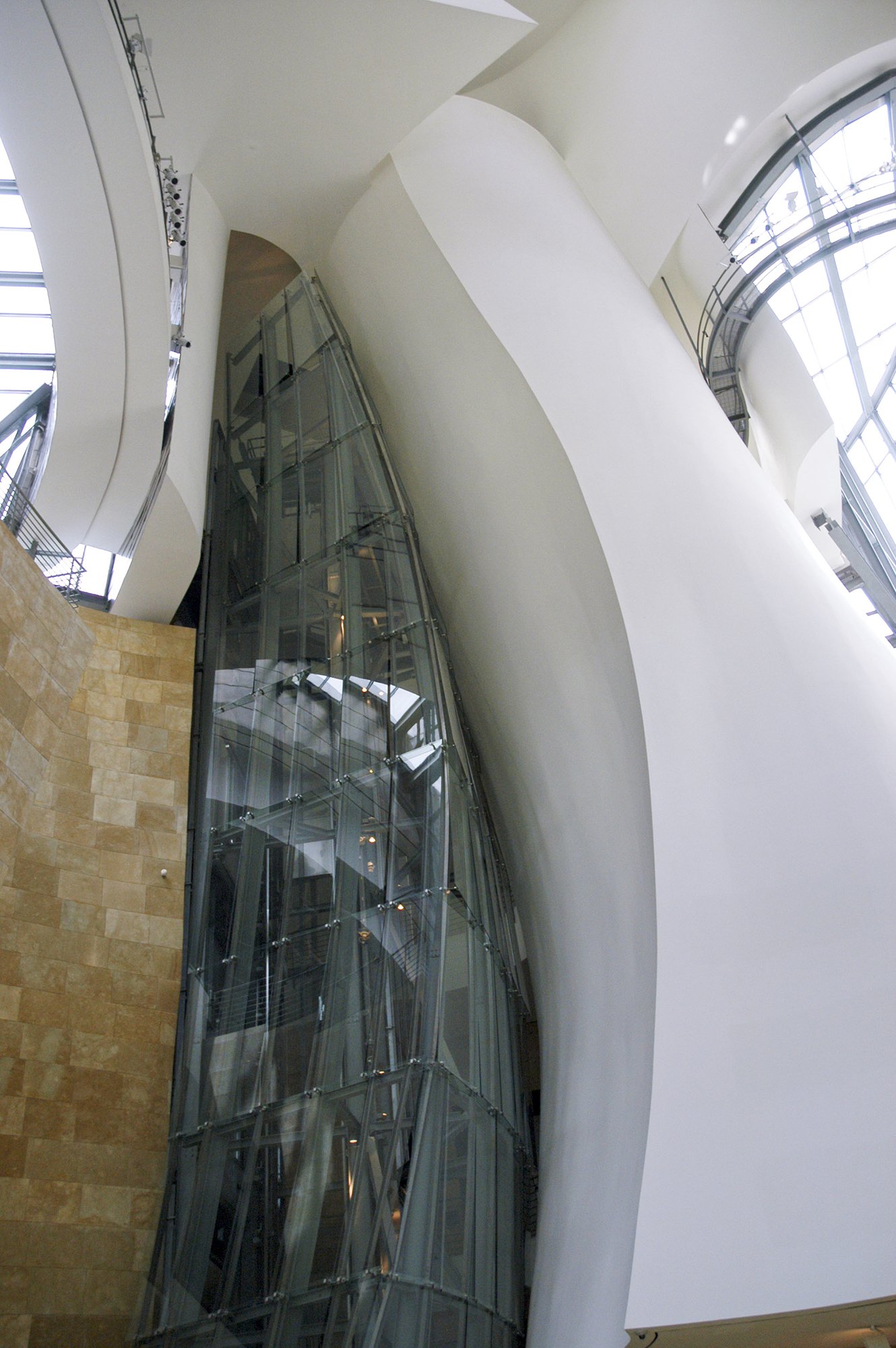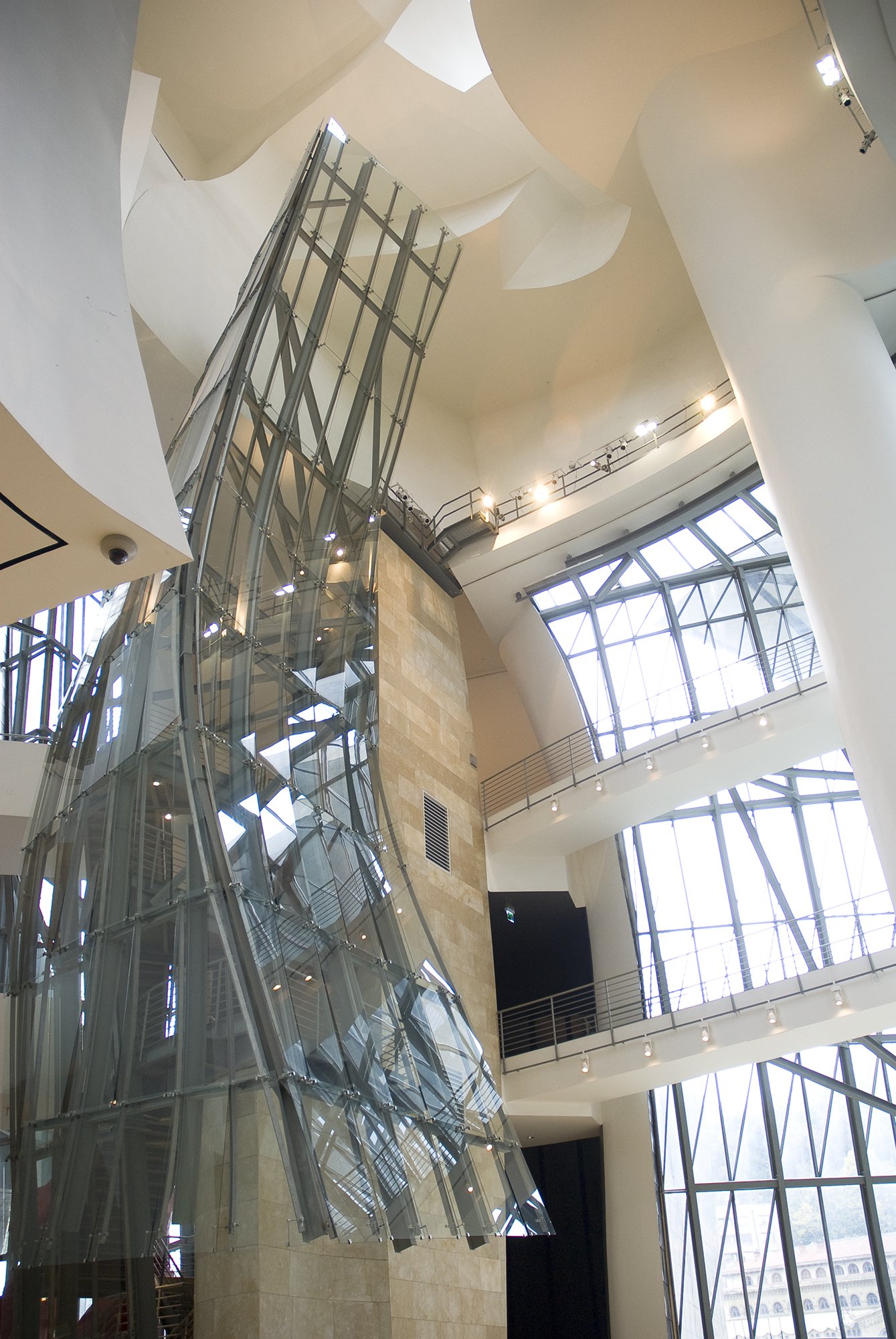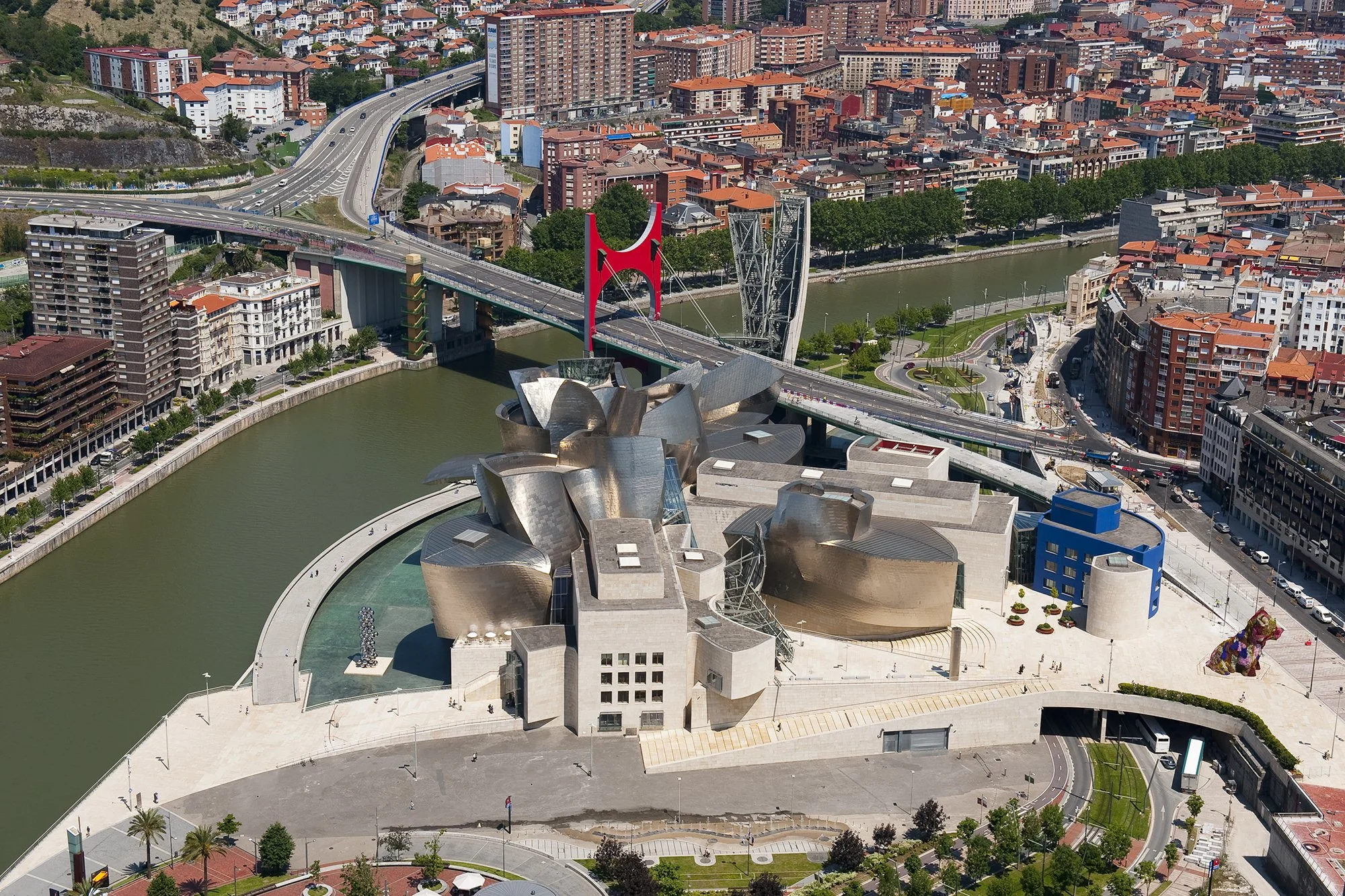Architecture: Guggenheim Museum Bilbao
View of Guggenheim Museum Bilbao from La Salve Bridge. Bilbao, Basque Country, Spain.
Image Courtesy of Guggenheim Museum Bilbao
Writing and Photo Editing by Ari Adams
Having recently celebrated its twenty-fifth anniversary on October 18th, 2022, the Guggenheim Museum Bilbao solidly remains one of the world’s most important and cherished works of modern architecture. Designed by the Canadian-American architect Frank Gehry in an effort by the Basque government to revitalize the then-industrial city of Bilbao, the museum was inaugurated in 1997, changing not only the centuries-old city’s architectural tradition but also its local economy and culture. Once known as one of the main industrial hubs of Northern Spain and the Basque Country, the arrival of the iconic museum to the banks of the Nervion River in Bilbao helped usher in a shift towards a cultural economy in the city which is now known for its food, unique Basque culture, and of course, the arts.
View of The Guggenheim Museum Bilbao from along the Nervion River walking path and below the Pedro Arrupe Bridge. Bilbao, Basque Country, Spain.
Image Courtesy of Guggenheim Museum Bilbao
Since the arrival of the Museum, the Nervion River—previously considered ecologically dead due to the presence of high levels of industrial waste and low levels of oxygen—has been revived and flourishes with natural life, swimmers and teams of rowers. The Guggenheim Museum Bilbao exemplifies not only modern architectural innovation but also the sociological and ecological impact that great architecture can have on a city’s inhabitants.
View of the Guggenheim Museum Bilbao from the North. Bilbao, Basque Country, Spain
Image Courtesy of Guggenheim Museum Bilbao
Consistently standing as one of the most visited museums in the world, the building sits on the south side of the central Nervion River and is defined by its dramatic curves and titanium-clad sheathing. Built from limestone, glass and 33,000 titanium sheets, the building’s curves and materials are meant to reflect light and emit the aura of the local climate and time of day. Due to the complex format of the building, the museum’s structure seemingly changes depending on the pedestrian’s point of view, making for a unique viewing experience as one navigates the city. Nevertheless, from the building’s most famous vantage point on the north side of the Nervion River between the Canstaños and Deusto neighborhoods, the building resembles a boat or fish and the titanium sheets resemble scales, keenly acknowledging the history of maritime exploration and cod fishing that remain culturally and economically important to the Basque people to this day.
Despite the illustriousness of the building’s exterior structure, the interior is equally impressive. Built around a central, flower-shaped atrium, the interior walls are defined by dizzying, organic curves, non-right angles, and glass curtains which flood the space with natural light and provide museum goers with views of the green hills of the Basque Country which define the borders of Bilbao. Housing twenty galleries that showcase the museum’s permanent and rotating exhibitions, museum goers are provided with four floors to explore and are accessible through glass and titanium elevators that showcase the building’s design as they move from one story to the next.
Classic style gallery with curved roof in Guggenheim Museum Bilbao.
Image Courtesy of Guggenheim Museum Bilbao
The 120,000 square feet of exhibition spaces are interconnected by curving platforms that both hug and protrude from the museum walls, making for a dynamic walking experience for visitors while mirroring the effect of the ever-changing viewing experience for pedestrians on the street level. In spite of the bewildering nature of the museum’s interior, the structure is not overwhelming to visitors and provides artists and curators with unique spaces upon which they build their exhibitions.
View of Guggenheim Museum Bilbao with cityscape in background.
Image Courtesy of Guggenheim Museum Bilbao
With twenty-five years under its belt as one of the great contemporary and modernist art museums, the impact of Gehry’s design has not faltered. Operating as a home for contemporary art from around the world while functioning as a stand-alone work of innovative design and architecture, the Guggenheim Museum Bilbao has changed the landscape of Bilbao physically and socially. Once known for ecologically destructive industrial practices and political violence, due to the Basque government’s hard work and investments in culture, the Basque Country is now known as a hub for the arts, food, music and dance and this change, in many ways, is exemplified by the construction of the Guggenheim Museum Bilbao in 1997. The building is evidence of how art really can change the world.




